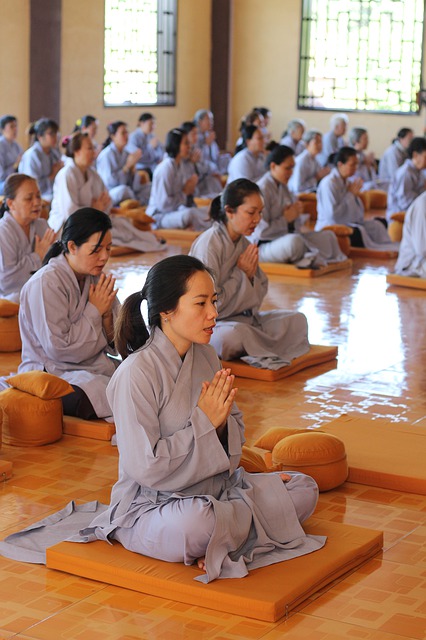Bodhisattvas: Striving to be a Savior
By Michael Ericson
In this essay, I will be focusing on one major difference between early and middle era Buddhism: the shift from a focus on attaining Nirvana for oneself to a focus on saving sentient beings and bringing Nirvana to others. The Bodhisattva school, especially as expressed in Shantideva’s “The Way of the Bodhisattva”, is the most important improvement from early Buddhism, and I believe it may even be the pinnacle of Buddhist achievement. But before I get into the inspiring ideals of the Bodhisattva, I will explain what the differences between the Bodhisattva ideal and the Arhat ideal are to demonstrate the progression from early to middle era Buddhism.

The Arhat ideal was the ideal of becoming a monk who totally dedicated their life to seeking Nirvana through meditation. These monks would retreat from society and focus completely on following the Eightfold Path to enlightenment. It was generally thought during the early era of Buddhism that anyone who hoped to attain enlightenment would either need to join a monastery, a secluded place where monks practiced together, or leave society and practice in solitude. Living a normal life was out of the question and having sex was forbidden, as it was assumed it would cripple a monk’s ability to cultivate detachment. Under this regime, it was thought that most people could not reach Nirvana. Reaching enlightenment was also seen as the ultimate goal of a Buddhist and dedicating one’s life to helping others was not a necessary part of that. The goal could be reached in a monastery while the rest of Indian society was trapped in samsara.
During middle era Buddhism, the Bodhisattva ideal arose, and it took a very different approach to the Buddhist program. Shantideva explained that the Buddhist duty was to save and enlighten all sentient beings, and the Bodhisattva ideal indicated that one could remain in the world and make a difference in it and still be enlightened. Rather than only seeking enlightenment for oneself, one would go to the edge of bliss, then head back to the world and lead others to it and work to save sentient beings. The idea was to put all others before oneself and totally give oneself to service. Knowing the truth, the Bodhisattva would be willing to risk death and sacrifice everything in order to do good and bring the Buddhist truth to others. As Shantideva wrote in “The Way of the Boddhisattva”, “May I be a protector for those who are without protectors, a guide for travelers, and a boat, a bridge, and a ship for those who wish to cross over!”
The Bodhisattva has the world on their shoulders, and this forces them to dedicate themselves fully to their discipline. They must have total self-control, and especially control over their own mind, if they are to be useful to others and achieve their lofty goal. Shantideva chastises himself, “While I have promised to liberate beings throughout space in the ten directions from their mental afflictions, I have not liberated even myself from the mental afflictions.” He then resolves to dedicate himself totally to the task of self perfection: “Without knowing my own limitations, I spoke at that time as if I were a bit insane. Therefore, I shall never turn back from vanquishing mental afflictions.”
This is an example for all Bodhisattvas to follow—because they all have the same ideal of saving all beings, they must never give up on the ambitious task of becoming totally pure within their own minds, being attached to nothing and wishing only to do good. The Bodhisattva is not only embarking on the enlightenment program for his own benefit, he is also doing it on the behalf of all the sentient beings that he will have the power and wisdom needed to help if he succeeds in achieving enlightenment. Thus, the call to discipline and introspection gains urgency. The Bodhisattva holds the enlightenment of all those people he would be able in the future to guide to enlightenment should he succeed in his hand, and he treats this responsibility with the ultimate care it deserves.
The new Bodhisattva ideal teaches the ideal of saving sentient beings, which had existed in early Buddhism, in a much more effective and meaningful way. The duty to save is inherent in the journey to Nirvana for a Bodhisattva, and he sees his enlightenment as a means not only to save himself, but to save others as well. Shantideva also reframes the idea of compassion in a way that includes radical self-sacrifice: allowing others to take from you and hurt you as a means of improving their life, if that is necessary, and being totally willing to give oneself to others. It’s no longer just the kindness and empathy and caring of early Buddhism, it is transcendent empathy, the valuing of others over oneself, because one has lost all attachment to one’s own existence as a human thanks to enlightenment. With this transition from a focus on liberation of individuals to a focus on the liberation of everyone, Buddhism became a much more powerful force for good, and individual Buddhists had an even more meaningful reason to perfect their practice and eliminate vice and attachment.
